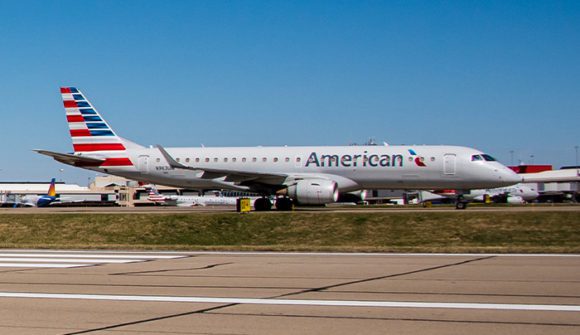In last week’s earnings call Gogo indicated that expected service revenue for its North America Commercial Aviation segment would be flat YoY in 2018. Considering the impending loss of some 400 American Airlines aircraft from its service fleet (~15%) that’s a tough position to hold. Digging into the revenue numbers a bit shows how it might play out.
So, yes, $GOGO expects CA-NA rev to be flat YoY. Also expects to lose ~400 installed aircraft (~14% of CA-NA fleet) with AA shift to $VSAT kit. Holding steady with that install base loss would be solid. #PaxEx https://t.co/V4ge6haL2Q
— Seth Miller (@WandrMe) February 22, 2018
In 3Q17 Gogo’s service flew on over 2800 commercial aircraft in North America. Some 250 of those had satellite service on board while the others carried the company’s terrestrial ATG kit. Looking at a breakdown of the total revenue numbers in the quarterly earnings report and in an investor briefing filed this week we deduced revenue per aircraft type in more detail than Gogo typically reports. In the following table, we derived the $143 based on Gogo’s two data points, viz. $64 and $220.
Getting to a split by aircraft type is especially important when looking at the potential 2018 revenue as the American Airlines aircraft leaving will be mainline, while some will convert to 2Ku. For example, American’s RJs will remain on the Gogo ATG network.
Revenue numbers ticked up slightly in 4Q17 based on a slight increase in aircraft flying but mostly thanks to nearly 200 more planes fitted with the 2Ku system versus ATG. A mainline aircraft flying with 2Ku realizes approximately 50% higher revenue than an ATG plane, based mostly on higher “take rates”. With the significant increase in bandwidth, Gogo can support more users per flight. In this table, we derived the ARPA $165.
Of this revenue, based on fleet size and aircraft type mix, it appears that American Airlines contributed approximately $154m, or 35% of the CA-NA service revenue in 2017. The ARPA numbers in the table below are our estimates.
Projecting out into 2018 and taking Gogo’s word of flat ARPA growth at face value, delivers an interesting perspective. Some 400 American mainline aircraft will be removed from the Gogo system. Another 250-350 (North American-based) mainline planes will convert from ATG to 2Ku. In the next table, all of the ARPA numbers are our estimates and the fleet numbers are our estimates based on Gogo’s statements.
Net growth to the North American fleet is expected to be minimal. This results in a net drop in total revenue based on these estimates, in part because of the way the company accounts for 2018 hardware sales (the company says, “CA-NA revenue of $445 million to $485 million, of which approximately 20% is equipment revenue”; that suggests $372m as a mid-point for service revenue).
For the airlines that set their own pricing – a position American converted to in January 2018 – the average revenue per aircraft (ARPA) is expected to dip initially. Gogo hopes that dip is short-lived, growing back as the take rate increases. In this scenario we hold it relatively steady for 2018, assuming any increase comes in 2019 which is in line with Gogo’s statements.
The other uncertainty in the revenue shift is based on how quickly aircraft are moved from one system to another. All 400 of the soon-to-be-Viasat aircraft will spend some time generating revenue for Gogo this year. The ATG-to-2Ku planes will also split their time on the two platforms. This model assumes an evenly paced rollout across the year. A 737 that is converting to Viasat service gets an ARPA at 50% of the full year number on average. That is not accurate on an individual aircraft basis – conversions happen more in Q1 and Q4 than over the summer – but on average it should be close.
The net result here is a $33m hit to Gogo’s revenue in 2018 from losing the American Airlines aircraft. Overall, Gogo’s mainline ATG revenue is nearly halved based on this estimate. At the same time, the 2Ku revenue component increases by some $75m. That gain is offset by an expected $30m increase in costs related to satellite capacity for 2018.
The hope for Gogo is that in 2019 the take rate continues to increase, along with revenue per session. ARPA and total revenue follow from there.
Reported in partnership with PaxEx.aero








